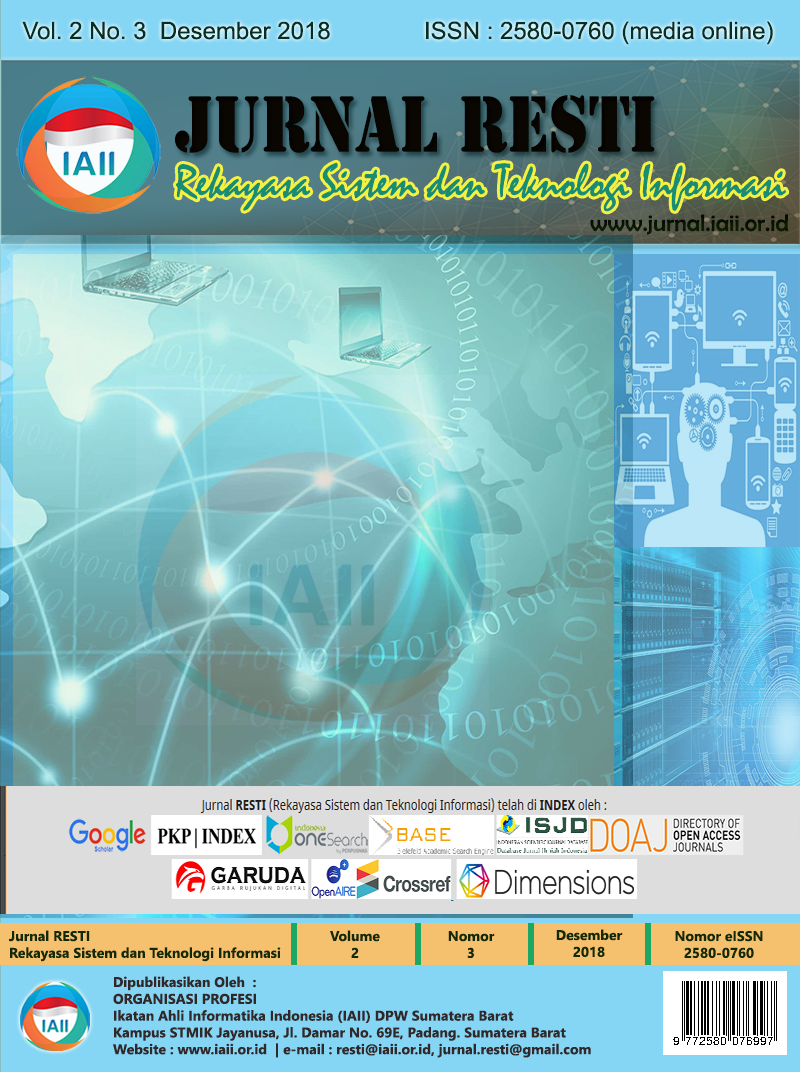Kontrol Bandwidth Dinamis Berbasis Algoritma Logika Fuzzy pada Jaringan Wireless Ad-Hoc
Abstract
Ad-Hoc network is a wireless network consisting of a collection of nodes that are connected spontaneously and dynamically. With the character of the Ad-Hoc network, this network is often used in the development of IoT devices (Internet of Things) or emergency conditions. But in the implementation of the Ad-Hoc network there are challenges that need to be addressed, one of which is the very limited bandwidth that can be provide. The existence of these things will lead to new problems, when network traffic is very busy, it will reduce the fairness level of bandwidth distribution. Therefore, the implementation of fuzzy logic is proposed as a reliable decision maker in managing bandwidth. From the results found in this study prove that the results of the obtained throughput performance is not found to be a significant increase, but the jitter and packet loss produces a better value than when the bandwidth management system is applied.
Downloads
References
[2] Sheu, S. T., & Chen, M. H., 1999. A Fuzzy Bandwidth Allocation Controller to Support Real-time Traffic over Wireless Network. IEEE Conference (hal. 5). Tamsui: IEEE.
[3] Slonowsky, D., Jiang, Q., & Srinivasan, R., 2002. A Fuzzy Dynamic Bandwidth Re-Allocator. IEEE Canadian Conference (hal. 8). Toronto: IEEE Canadian.
[4] Yi, C., Hao, L., Ge, G., & Ruimin, H., 2007. A Resource Allocation Control for Wireless Ad Hoc Networks. IEEE Conference (hal. 4). Wuhan: IEEE.
Copyright (c) 2018 Jurnal RESTI (Rekayasa Sistem dan Teknologi Informasi)

This work is licensed under a Creative Commons Attribution 4.0 International License.
Copyright in each article belongs to the author
- The author acknowledges that the RESTI Journal (System Engineering and Information Technology) is the first publisher to publish with a license Creative Commons Attribution 4.0 International License.
- Authors can enter writing separately, arrange the non-exclusive distribution of manuscripts that have been published in this journal into other versions (eg sent to the author's institutional repository, publication in a book, etc.), by acknowledging that the manuscript has been published for the first time in the RESTI (Rekayasa Sistem dan Teknologi Informasi) journal ;







